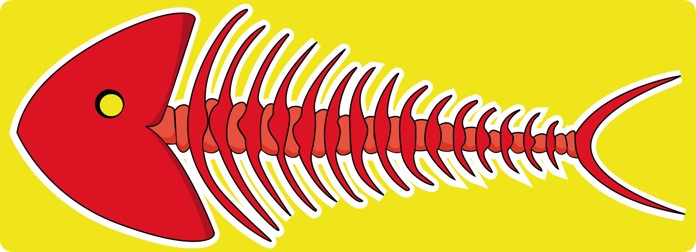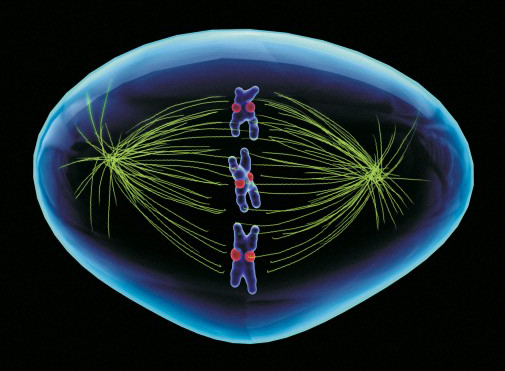Virus-linked cancer gets help from host
Although viruses like HPV (human papilloma virus) are involved in a considerable number of cancers, it takes more than the viral infection for cancer to develop. Host proteins also play important roles. Mary Zutter, M.D., and colleagues are exploring the role of integrins – proteins that help cells attach to each other – in cancer progression.
In a recent study published in PLoS ONE, the researchers report that α2β1 integrin modulates the growth and progression of squamous cell carcinoma, a common class of epithelial cancers caused by HPV. They showed that α2β1 stimulated pre-cancerous cellular changes caused by HPV infection in mice. Tumors in HPV-infected mice lacking α2β1 were less likely to metastasize (or spread) to the lymph nodes. And tumor cells expressing the integrin, when injected into host mice, showed increased growth compared to tumors lacking the protein, regardless of the integrin status of the host.
The results suggest that α2β1 integrin may be a potential target for strategies to limit the spread of certain squamous cell cancers.
The research was supported by grants from the National Cancer Institute and the National Institute of General Medical Sciences.
— Melissa Marino
Clues to skeletal form in ‘feelgood’ fish
Malformations of the face and skeleton account for the majority of birth defects, and a number have been linked to abnormalities of the extracellular matrix (ECM) – the structural support tissue around cells. Ela Knapik, M.D., and colleagues are using zebrafish to explore the molecular and cellular mechanisms that cause ECM defects.

iStockphoto.com
In the November issue of Disease Models & Mechanisms, they characterize the zebrafish ‘feelgood’ mutant, which has a severely malformed head skeleton and shortened body length because of defects in a late stage of cartilage development. They find that the ‘feelgood’ mutation hinders the deposition of collagen, but not other ECM components. They demonstrate that the ‘feelgood’ mutation is a variant in the transcription factor Creb312, which they show regulates the expression of genes encoding COPII proteins that are required for the movement of cargo, including ECM components, through the cell.
The findings demonstrate that precise regulation of Creb312 is essential for skeletal development and suggest that it may be a candidate cause of skeletal diseases.
This research was supported by grants from the National Institute of Dental and Craniofacial Research, the National Heart, Lung and Blood Institute and the National Institute of Diabetes and Digestive and Kidney Diseases.
— Leigh MacMillan
Divvying up chromosomes
Mitosis, or the separation of chromosomes during cell division, is driven by dynamic interactions between the kinetochore region on chromosomes and string-like structures called microtubules. A number of proteins, including the enzyme Cdk1, regulate these interactions, but it is unclear what kinetochore components such enzymes work upon.

Wellcome Images
Kathy Gould, Ph.D., and colleagues have identified the kinetochore protein Nsk1 as a novel substrate for Cdk1 and have characterized its role in kinetochore-microtubule interactions. They show Nsk1 promotes proper interactions between the kinetochore and microtubules; therefore, cells lacking Nsk1 show errors in chromosome segregation. Nsk1’s role in this process is regulated by addition of phosphate groups (phosphorylation). Mutant Nsk1 (which can’t be phosphorylated) binds prematurely to kinetochores and spindle, and leads to even more severe defects in mitosis.
The results reported in the Nov. 14 issue of the Journal of Cell Biology establish new roles for these proteins in ensuring appropriate chromosome segregation during cell division.
The research was supported by grants from the National Cancer Institute, the National Institute of General Medical Sciences, the Howard Hughes Medical Institute and the American Lebanese Syrian Associated Charities.
— Melissa Marino
Young stem cells counter kidney aging
Aging kidneys accumulate “scar tissue” – areas of fibrosis that reduce the organ’s ability to filter blood and produce urine. Previous studies have suggested that bone marrow-derived stem cells may modulate this aging-related renal injury.
To explore whether these effects depend on the age of the stem cells, Agnes Fogo, M.D., and colleagues compared the ability of young versus old bone marrow to attenuate renal aging in old mice. They transplanted bone marrow from young or old mice and examined markers of kidney fibrosis and cellular senescence – a status that renders cells more sensitive to injury and less likely to recover from stressors.
They report in the November Journal of the American Society of Nephrology that young (but not old) bone marrow cells reduced the expression of markers of fibrosis and senescence and increased expression of the anti-aging gene Klotho. The studies demonstrated that bone marrow-derived stem cells modulate kidney aging by directly reconstituting the kidney structure, influencing adjacent kidney cells and producing circulating anti-aging molecules.
This research was supported by the National Institute of Diabetes and Digestive and Kidney Diseases.
— Leigh MacMillan
We welcome suggestions for research to highlight in Aliquots. The items should be primary research articles (no reviews, editorials or commentaries) published within the last two months in a peer-reviewed journal. Please send the article citation (PDF if available) and any other feedback about the column to: aliquots@vanderbilt.edu.
Past Aliquots
June 22, 2012
June 8, 2012
May 11, 2012
April 27, 2012
April 13, 2012
March 30, 2012
March 16, 2012













